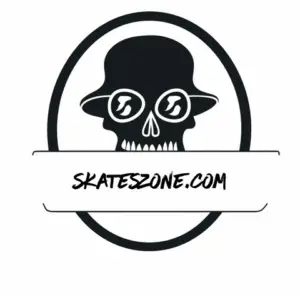From the outside looking in, street skateboards probably all look the same. It’s the same in any performance-driven activity. Sport bikes all look the same, but there are small differences between them that jump out at experienced riders. The same is true for the popsicle sticks we ride. Skateboard deck sizes vary in slight ways that have huge impacts on the say they feel and operate.
Even the best skateboard decks have small differences that jump out at experienced skaters. The roundness of a tail and nose will usually vary between skateboards, for instance. We notice these things because they will affect how a board feels when riding switch stance or after a shuvit. When it comes to the measurements, which can have a massive effect on the way a board rides, we usually focus on just one.
Width
We put width in the top spot because it is the main measurement. This is the one size you will always get from a company. Skateboards do not come in small, medium and large sizes. Rather, the width across their widest point is given in inches. So, when someone asks you what size your board is, you give them this measurement.
The birth of the modern skateboard shape coincided with the tech revolution of the early 1990s. At that time, boards started getting slimmer, down from the previous 10-inch boats to around 7.5 inches on average. It was believed that smaller boards flipped easier, but modern skateboarders are proving that isn’t true.
The most commons sizes people ride currently are between 8.25 and 8.5 inches. Some skaters have a wider setup to use as a park or transition board, but it really is not necessary. There is no correct size for any terrain or person, however, smaller riders often prefer smaller boards and vice versa. Skaters should experiment and find a size that feels comfortable for them, regardless of what everyone else is doing.
Length
Length might seem important, but it is just the first on a list of measurements that no one really pays attention to. Modern street decks are usually around 32 inches long. Some may be a little longer than that, and you may notice it at first if you’ve been skating a shorter board. But you will soon adjust and it will be a non-issue. Again, a smaller rider may prefer a shorter board, but we can normally get used to any length.
Wheelbase
It would seem that wheelbase would be a critical number to a skateboarder. After all, a shorter wheelbase should turn tighter and a longer one should turn wider, but it does not seem to be the case. Apparently, the agility provided by pivoting trucks makes wheelbase a moot point. In truth, manufacturers have the formula for perfect wheelbase down pat, and they work out the optimal wheelbase for a given length for us. Wheelbases are usually around 15 inches, but you could ask a thousand skaters and still not find one that has ever given it much thought.
Tail and Nose Length
The modern, long, flat noses and tails got their start with World Industries boards in the late 1980s. Rodney Mullen, the godfather of street skateboarding, explains the process that went down in this interview on The Ride Channel . The board that started it all was Mike Vallely’s Barnyard deck. Here’s Mike V. skating that board in World Industry’s Rubbish Heap video from 1989. It looked odd then, but it’s normal now.
Unlike Vallely’s board, where the tail and nose were equal, the modern tail is almost always a bit shorter than the nose. Tails can be anywhere between 6 and 7 inches long, while noses are usually around 7 to 7.5 inches. This is another measurement that companies may or may not give in their literature on a board, and one that few skaters pay attention to. It is not irrelevant, but we can adjust to most any length of nose or tail.
Concave
If you are unsure what concave is, this Video explains it. Essentially, it is the bend to the board that gives it a bowl shape on top.
Concave could be measured by depth, but no manufacturers seem to use such a measurement. Rather, companies explain the concave of a board with relative terms like deep, shallow, steep, mellow and so on. It is maybe a bit easier to flick a board with deeper concave, but not necessarily. Just avoid a flat deck, and you should be able to flip it just fine.
The Roll Away
It is not like width is the only measurement that matters. Rather, that is just the one measurement skaters usually pay attention to. The other measurements, like length, wheelbase, and tail and nose length play major roles in how a board performs, but we never give them a second thought – we just expect them all to work.
However, as this article about Black Label madmen John Lucero and Jeff Grosso points out, someone somewhere is working all of the variables out on every new shape.
Finally, along with the deck size, to have the perfect skateboard, you should also consider what size trucks you need.
